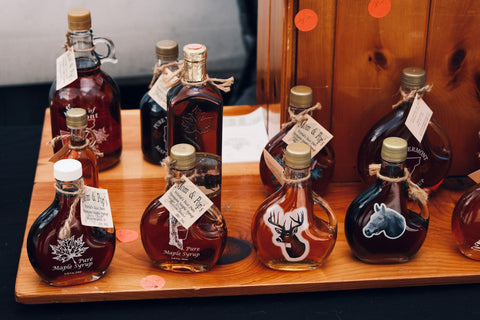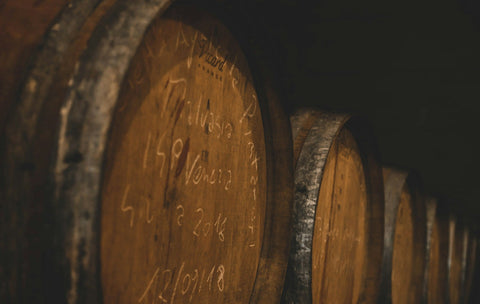Whiskey collecting is more than just a hobby—it’s an investment in craftsmanship, heritage, and potential financial appreciation. Whether you're a seasoned connoisseur or a newcomer looking to build a whiskey collection, knowing which bottles gain value over time and how to store them properly can make all the difference.
In this guide, we’ll explore which whiskeys appreciate in value, how to store them for longevity, and tips for building a whiskey collection that stands the test of time.
Why Collect Whiskey?
Unlike other spirits, whiskey continues to age in value but not in the bottle—meaning a properly stored bottle remains in peak condition indefinitely. As global demand for rare and aged whiskeys rises, the market for collectible whiskey has grown significantly. Some limited edition bottles and discontinued expressions have appreciated in value by hundreds or even thousands of dollars over time.
Whiskey collecting can be a passion-driven pursuit, but it can also be a smart financial investment when approached correctly.

Whiskeys That Appreciate in Value
Not all whiskeys are created equal when it comes to investment potential. Here are some categories of bottles that tend to increase in value:
1. Limited Edition and Special Release Whiskeys
Brands release limited edition expressions in small quantities, making them highly sought after. Over time, as supply dwindles, demand (and price) increases.
Examples:
-
Pappy Van Winkle’s Family Reserve (Buffalo Trace)
-
Buffalo Trace Antique Collection
-
Macallan Fine & Rare Series
-
Old Forester Birthday Bourbon
2. Aged and Ultra-Aged Whiskeys
Older whiskey, particularly single malt Scotch and bourbon aged over 15 years, often appreciates due to rarity and depth of flavor. Aging whiskey for decades is expensive for distilleries, making older expressions more valuable.
Examples:
-
The Macallan 25-Year-Old Sherry Oak
-
GlenDronach 18-Year-Old Allardice
-
Yamazaki 18-Year-Old Japanese Whisky
-
Glenfiddich 40-Year-Old
3. Discontinued or Closed Distillery Bottles
When a distillery shuts down or a whiskey line is discontinued, remaining bottles become collector’s items. These whiskeys are often sought after for their historical significance and unique production styles.
Examples:
-
Port Ellen (Closed Distillery - Scotland)
-
Brora 30-Year-Old (Scotland - Closed in 1983, Reopened in 2021)
-
Glenury Royal 23-Year-Old (Defunct Distillery - Scotland)
4. First Editions and Inaugural Releases
First batches from a new distillery or whiskey brand often become collectible over time, especially if the distillery gains prominence.
Examples:
-
Compass Box "Hedonism" (First blended grain whisky release)
-
Midleton Very Rare (First editions from the 1980s are now highly valuable)
-
Woodford Reserve Master’s Collection (Early releases fetch high prices today)
5. Japanese Whisky Boom
Japanese whisky has skyrocketed in popularity, leading to significant value appreciation. Aged expressions, discontinued bottlings, and whiskies from Suntory and Nikka distilleries are highly sought after.
Examples:
-
Hibiki 30-Year-Old
-
Karuizawa (Closed Japanese Distillery Bottles)
-
Yamazaki 25-Year-Old
How to Store Whiskey for Long-Term Value
Proper storage is crucial for maintaining whiskey quality and maximizing its appreciation potential. Here’s how to do it:
1. Keep Bottles Upright
Unlike wine, whiskey should always be stored vertically to prevent prolonged cork contact, which can degrade over time and cause leaks.
2. Store in a Cool, Dark Place
Heat and light can cause whiskey to oxidize and degrade. Ideal temperature: 59–65°F (15–18°C). Keep bottles away from direct sunlight and temperature fluctuations.
3. Avoid Extreme Humidity
High humidity can damage labels, reducing the bottle’s resale value, while dry environments can cause cork shrinkage, leading to evaporation. Aim for 50-70% humidity.
4. Seal Bottles Properly
Ensure the bottle cap or cork is tightly sealed to prevent evaporation, which can reduce both volume and alcohol content over time.
5. Limit Oxygen Exposure
Once opened, whiskey begins to oxidize. If you plan to store an opened bottle long-term, consider transferring it into smaller bottles to reduce air exposure.
Tips for Building a Valuable Whiskey Collection
Start with a Theme: Focus on a specific category, such as bourbon, Scotch, Japanese whisky, or rare single malts.
Track Market Trends: Monitor whiskey auctions, industry reports, and collector forums to stay updated on rising brands and valuable releases.
Buy Direct from Distilleries or Trusted Retailers: This ensures authenticity and provenance, crucial for maintaining bottle value.
Invest in Display and Security: Use temperature-controlled cabinets and keep bottles in original packaging for maximum resale potential.
Patience is Key: The longer you hold onto a bottle, the greater its potential appreciation—but only if properly stored.
Where to Buy and Sell Collectible Whiskey
Buying
-
Direct from distilleries (Limited editions and exclusive releases)
-
Whiskey auctions (Sotheby’s, Bonhams, Whisky.Auction)
-
Trusted liquor stores and specialty shops
Selling
-
Auction houses (Christie’s, Whisky.Auction, Scotch Whisky Auctions)
-
Private whiskey collector groups
-
Online marketplaces (Check legal regulations in your country)
Final Thoughts: Is Whiskey Collecting Worth It?
Collecting whiskey is both an art and an investment. Whether you’re looking to build a personal whiskey library, resell rare bottles for profit, or simply enjoy fine spirits, choosing the right bottles and storing them properly is essential.
For those interested in starting or expanding a collection, Five Towns Wines & Liquors offers a curated selection of premium whiskeys, from limited editions to sought-after aged expressions. Stop by today and start investing in your whiskey future!
🥃 What’s the most prized bottle in your collection? Let us know in the comments!


